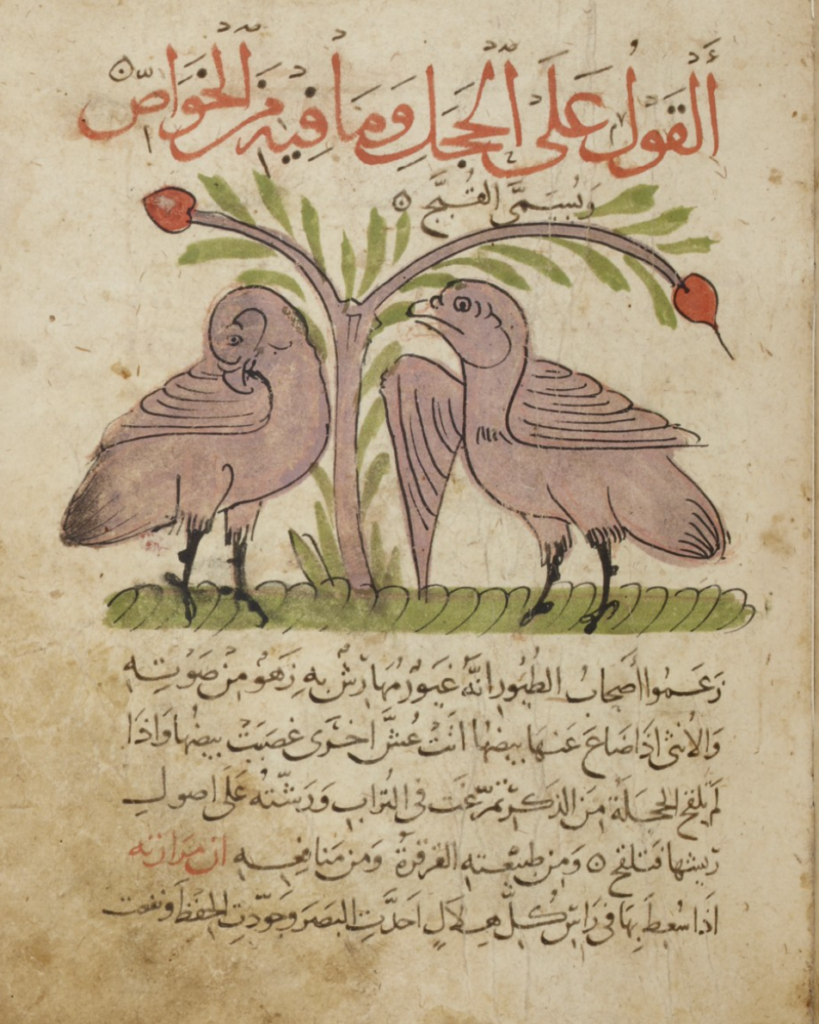Today, this usually refers to the Perdrix perdrix, a game bird from the family Phasianida, which also includes the feasant, chicken and grouse. Its native area is to be found in East Asia. It is also known as the ‘grey partridge’ to distinguish it from varieties in the Alectoris family, most notable among them the red-legged partridge, which is particularly found in southern Europe. It was already known in Ancient Greece where it was even farmed, while the Romans thought partridge eggs were beneficial for invalids.
The meat of the partridge — known in Arabic as ḥajal (حجل) or qabaj (قبج) — was considered to have aphrodisiac qualities as well as being very nutritional, despite the fact that it is quite dense, slowly digested (though some scholars stated the opposite), and constipating. It was suggested to leave it after slaughtering so as to tenderize it, something which is still recommended today, of course, for game birds. According to the Andalusian botanist Ibn al-Baytar (d. 1248), partridge liver was useful against epilepsy, while its its bile was used in the treatment of eye diseases (e.g. catarract) and to improve the sight, as well as increasing intelligence and strengthening the memory! Partridge eggs cooked in vinegar were thought to be an effective medicine against stomach aches and colic. His compatriot Ibn Khalsun (13th c.) held that the male partridge is the best to eat as it strengthens the stomach, but can cause fevers to those suffering from colic, though this can be remedied by frying the bird in sweet almond oil and crusting it with egg yolks.
In the culinary tradition, partridge appears very sparingly, particularly in the Near East, where it is called for in only one Abbasid recipe (alongside lark, which was equally rare), in a chapter of dishes ‘that nourish those with sick bodies’. The dish is a stew (maraq) with onion, galangal, sumac, raisins and pomegranate, with the result being similar to a pottage. In another case, partridge is mentioned as an ingredient in a zirbāja (زيرباجة) for women wishing to lose weight.
The situation was very different in Muslim Spain and North Africa and The Exile’s Cookbook contains no fewer than five dishes with partridge, prepared in a variety of ways, in a stew, on a spit and, in one case, coated with egg whites mixed with a little flour and breadcrumbs.

